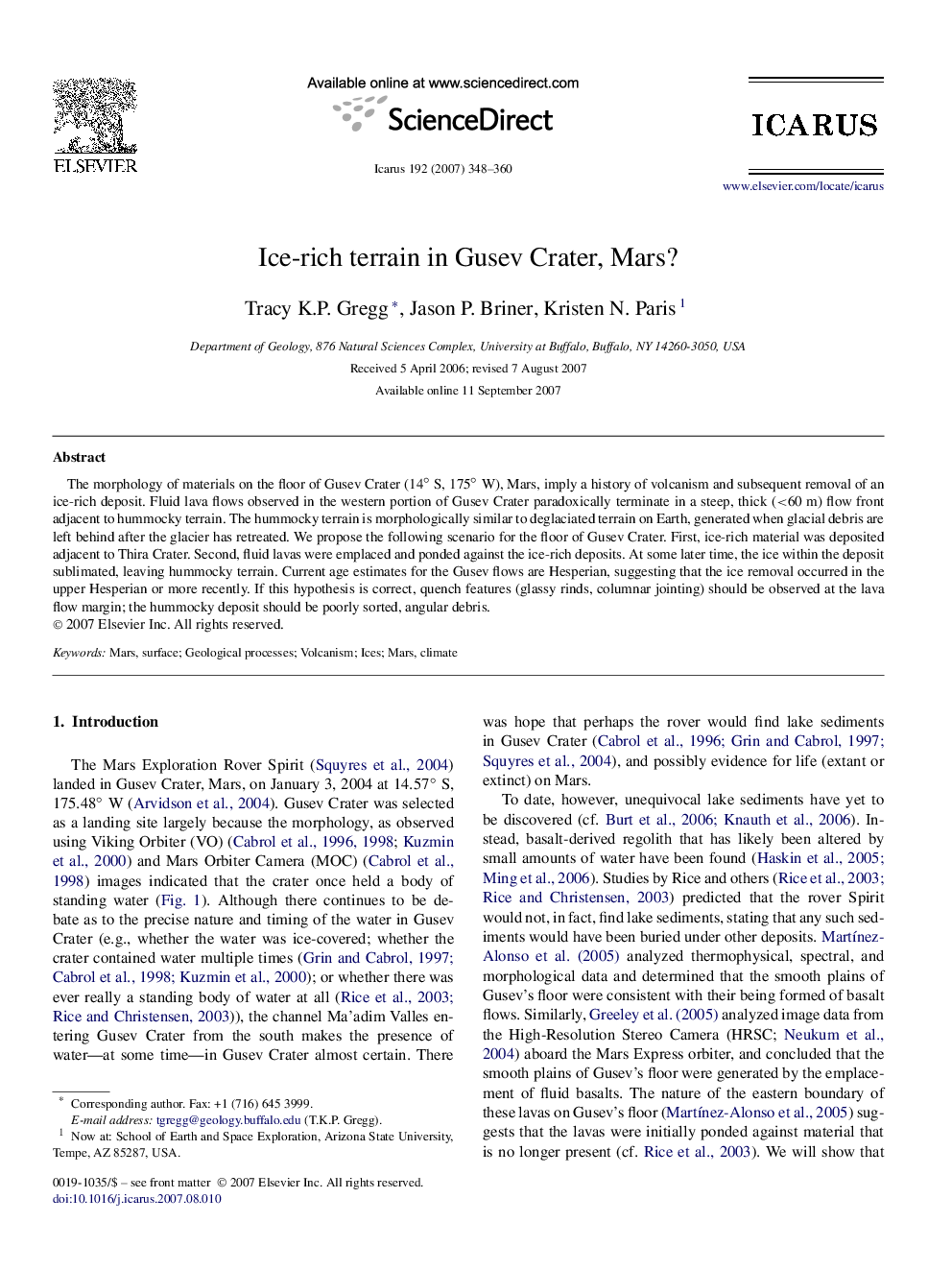| Article ID | Journal | Published Year | Pages | File Type |
|---|---|---|---|---|
| 1775908 | Icarus | 2007 | 13 Pages |
The morphology of materials on the floor of Gusev Crater (14° S, 175° W), Mars, imply a history of volcanism and subsequent removal of an ice-rich deposit. Fluid lava flows observed in the western portion of Gusev Crater paradoxically terminate in a steep, thick (<60 m<60 m) flow front adjacent to hummocky terrain. The hummocky terrain is morphologically similar to deglaciated terrain on Earth, generated when glacial debris are left behind after the glacier has retreated. We propose the following scenario for the floor of Gusev Crater. First, ice-rich material was deposited adjacent to Thira Crater. Second, fluid lavas were emplaced and ponded against the ice-rich deposits. At some later time, the ice within the deposit sublimated, leaving hummocky terrain. Current age estimates for the Gusev flows are Hesperian, suggesting that the ice removal occurred in the upper Hesperian or more recently. If this hypothesis is correct, quench features (glassy rinds, columnar jointing) should be observed at the lava flow margin; the hummocky deposit should be poorly sorted, angular debris.
